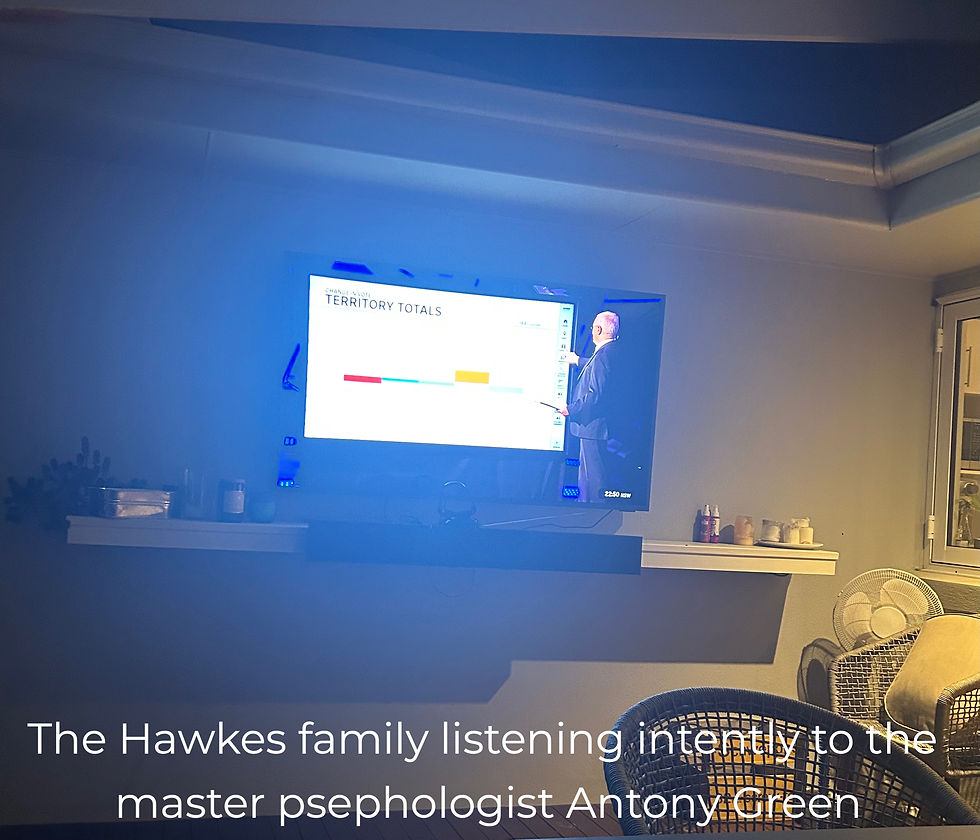The most lefty jurisdiction in the world?
- Jonathan Hawkes
- Oct 23, 2024
- 3 min read
The ACT Election
Well, no surprise for those local Canberra residents living in Australia’s most left-wing city: the progressive Labor Party is certain to regain government. The only difference this time will be the inclusion of independents as part of a Labor-Green-Independent minority government.
After 23 years in power, no sensible, informed person could expect anything different after closely following the election campaign, announced policies, media coverage, and the general zeitgeist of Canberra.
If you lived here, you’d know.
So why did this happen?
Setting aside the unique Hare-Clarke voting system under which the ACT operates—which, to me, naturally benefits left-leaning parties whose ideology revolves around collectivism rather than individualism—the key to success lies in getting the fundamentals right.
A couple of Hare-Clarke fundamentals:
You must pre-select candidates with high public recognition and name ID.
You must thoroughly vet these candidates: distractions cost critical media exposure and opportunities while in opposition.
The party organisation, sitting MPs, and candidates must act as one. No policy discrepancies, no inconsistencies—be on message, work as a team!

Like all elections, the results are a product of multiple factors. Here’s my top five, in what I believe to be the order of importance:
The Liberals failed to make the case for change. After 23 years in government, if your primary vote remains pretty much unchanged since the last election, you’ve failed. It's either a failure to offer a better positive alternative or a failure to convince voters it's a really bad government.
Competence is key when you're in opposition. Bob Hawke’s adage still rings true: “If you can’t govern your own party, how can you govern the nation?” If voters can't see you are competent in Opposition, why would they switch their support?
Beware of the rise of 'Independents'. They are not independent; they are now a well-organised, incredibly well-funded political force. If they were so independent, why do they all use the same branding and colours, and funded by the same people?
The Greens are pushing too far. People like ideas, but not radical ones that go beyond what even Canberra’s progressive voters find reasonable. Shane Rattenbury may project a reasonable image, but his party’s policies are more radical than ever.
The media still matters. Political parties often misunderstand the role of broadcast media, even in Canberra. People still watch and listen. Parties need to better understand what makes a good story, understand the pressures on journalists, and how to craft a compelling narrative. Kudos to Mark Parton: to me, he had the most consistent 'cut-through' over many months, even surpassing the Chief Minister.
For those watching elections closely, do the results have any implications for a federal election? Absolutely not. Don’t even go there. The only noteworthy takeaway was how both major parties—and, critically, the Greens—failed to counter the rise of independents and failed to construct a compelling narrative against them.
Finally, a topic making the rounds on Canberra ABC (because, you know, they love this stuff): What is it with the Liberals? Why can’t they win an election or at least be more competitive?
For me, this is the $64,000 question. Left or right? Moderate or conservative?
The only thing I know from over 20 years in politics, including at least six Hare-Clarke elections (in Tasmania and the ACT), is that if you work hard to get the fundamentals right, listen to the community, reflect those concerns in good policy, select outstanding candidates, communicate those policies effectively in the media, and consistently explain why you’re a better choice than all others—it should all come together.
Hopefully.






Comments